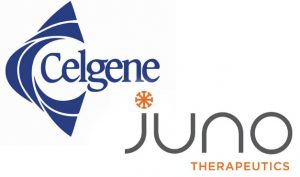 Back in January, one of our predictions for the year included a ramp up in M&A activities on all fronts, driven in part by corporate tax reductions that left many companies with plenty of cash for acquisitions. While news during Biotech Week SF — aka JPM18 — was sparser than we and others expected, that scarcity was soon remedied by a spate of deal announcements. In fact, less than two months into 2018, the value of the deals announced in recent weeks already exceeds half of what we saw for the whole of 2017.
Back in January, one of our predictions for the year included a ramp up in M&A activities on all fronts, driven in part by corporate tax reductions that left many companies with plenty of cash for acquisitions. While news during Biotech Week SF — aka JPM18 — was sparser than we and others expected, that scarcity was soon remedied by a spate of deal announcements. In fact, less than two months into 2018, the value of the deals announced in recent weeks already exceeds half of what we saw for the whole of 2017.
The biggest spenders to date have been Celgene and Sanofi.
On January 7, Celgene led off with a $1.1 billion upfront offer for Impact Biomedicines and its candidate treatment for myelofibrosis, the JAK2 inhibitor fedratinib. Celgene could also pay up to an additional $1.25 billion on regulatory approval milestones, some likely to be realized in 2018 and 2019, as an NDA is planned for the drug later this year — as well as up to $4.5 billion in future sales and milestone payments. Celgene then followed up with a $9 billion offer for the 90% of Juno Therapeutics that it didn’t already own. Celgene and Juno had already been partnered in a 10-year collaboration on CAR-T, announced in 2015. Juno’s most advanced CAR-T product, JCAR017, could be approved in the United States as early as year-end 2018. Both acquisitions boost Celgene’s standing in the market for drugs to treat multiple myeloma and other blood cancers.
 On January 21, Sanofi made its first move, making an $11.6 billion offer for Bioverativ, the hemophilia and other blood disorders company spun off from Biogen in 2016. Hemophilia is a growing market, valued at $10 billion a year worldwide, and Bioverativ already sells two products to treat forms of the disease in Australia, Canada, Japan and the United States. Then on January 29, Sanofi made its second acquisition, offering to buy Belgian firm Ablynx for $4.8 billion. This deal further adds to Sanofi’s focus in specialty care and rare diseases with the acquisition of caplacizumab, Ablynx’s treatment for the rare bleeding disorder, acquired thrombotic thrombocytopenic purpura. The deal also brings Sanofi Ablynx’s innovative nanobody platform. Nanobodies are tiny antibody fragments that are able to selectively bind to a specific antigen, and can be combined with each other or with other molecules or drugs to target multiple pathways at once with a single construct.
On January 21, Sanofi made its first move, making an $11.6 billion offer for Bioverativ, the hemophilia and other blood disorders company spun off from Biogen in 2016. Hemophilia is a growing market, valued at $10 billion a year worldwide, and Bioverativ already sells two products to treat forms of the disease in Australia, Canada, Japan and the United States. Then on January 29, Sanofi made its second acquisition, offering to buy Belgian firm Ablynx for $4.8 billion. This deal further adds to Sanofi’s focus in specialty care and rare diseases with the acquisition of caplacizumab, Ablynx’s treatment for the rare bleeding disorder, acquired thrombotic thrombocytopenic purpura. The deal also brings Sanofi Ablynx’s innovative nanobody platform. Nanobodies are tiny antibody fragments that are able to selectively bind to a specific antigen, and can be combined with each other or with other molecules or drugs to target multiple pathways at once with a single construct.
The common underlying thread between both Celgene and Sanofi’s acquisitions is loss of patent protection. The patents covering Sanofi’s top selling drug, Lantus insulin, expired in 2015 and the company has been facing growing threats to sales from generics. Celgene is also facing the coming loss of patent protection for its oncology drug Revlimid as early as 2022 in the United States, and so is looking for new products as well as a further boost to its standing in the market for treating multiple myeloma and other blood cancers.
The year is still young and there are plenty of other companies with cash to spend and needs to bolster their portfolios. In fact, as we were completing this post, Roche announced a $1.9 billion deal to acquire Flatiron Health, including its cancer electronic health records software and curated data repository of real-world cancer evidence. “This is an important step in our personalized healthcare strategy for Roche, as we believe that regulatory-grade real-world evidence is a key ingredient to accelerate the development of, and access to, new cancer treatments,” Daniel O’Day, CEO of Roche Pharmaceuticals, said in a statement.
Who is next, both on the acquirer and acquisition side? Stay tuned…